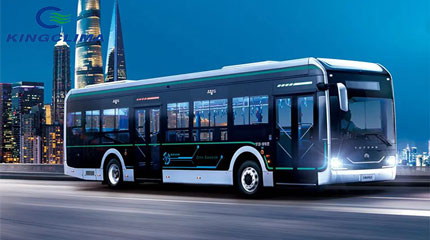There are many kinds of refrigerants in
bus hvac system, through this article, let's take a detailed look at what are the differences between different refrigerants.
R134a (1,1,1,2-tetrafluoroethane): It is a refrigerant that does not contain chlorine atoms, does not have a destructive effect on the ozone layer, has good safety performance (non-flammable, non-explosive, non-toxic, non-irritating and non-corrosive), and its refrigeration capacity and efficiency are very close to R-12 (dichlorodifluoromethane, Freon), so it is regarded as an excellent long-term alternative refrigerant. R-134a is currently R-134a is the best environmentally friendly alternative to R-12, which is recognized internationally. It does not destroy the ozone layer at all, and is the environmentally friendly refrigerant currently recognized and recommended by most countries in the world, and is also the mainstream environmentally friendly refrigerant, which is widely used for initial installation in new refrigeration and air-conditioning equipment and re-addition in the service process.
R407c: It is made up of R32 refrigerant and R125/refrigerant plus R134a refrigerant in a certain ratio, which is an environmentally friendly refrigerant that does not destroy the ozone layer. Under air conditioning conditions, its unit volume refrigeration capacity and refrigeration coefficient are 5% lower than R22; while under low temperature conditions, its refrigeration coefficient does not change much, but its unit volume refrigeration capacity is 20% lower. r407c has poor heat transfer performance, which directly affects the change of refrigerant, and is not miscible with mineral-based lubricants, but can dissolve in polyester-based synthetic lubricants. It has high requirements for drying.

Main features of KingClima R410A bus air conditioning products
At present, the refrigerants used by domestic and foreign automotive air conditioning enterprises are mainly R134a and R407c, and their winter heating is mainly by means of electric heating PTC, whose heating conversion efficiency is not higher than 0.9, which seriously affects the range of the whole vehicle.
In order to improve the winter heating effect and energy conversion efficiency, high-efficiency R410A air conditioning products came into being, which can reach COP value of 1.2 at -15℃ to meet the demand of winter heating in cold regions.
1、Large temperature difference range application
Can be applied to -15 ℃ cold environment, but also to meet the 50 ℃ high temperature and high humidity environmental conditions.
2、Good energy saving
Winter heating effect is improved significantly, and power consumption is reduced by more than 50% compared with PTC, which improves product economy and realizes energy saving. The use of electronic expansion valve intelligent adjustment and fan PWM infinitely variable speed makes the product seasonal energy efficiency ratio reach more than 3.2.
3、Strong environmental protection
Highly efficient and environmentally friendly refrigerant, the charge volume is reduced by more than 20%, reducing the pollution to the air environment; all-welded interface of air conditioning products reduces the risk of refrigerant leakage.
4、High comfort
Adopt electronic expansion valve to realize precise control of system refrigerant, enhance the cooling performance and customer ride comfort.
5、Low maintenance cost
The selected parts are IP67 to meet the requirements of harsh environments.


